Can I Tour or Trek to Everest Base Camp in Winter Nov. Dec. Jan and Feb?
While Tibet is most popular to visit from April to October, it is still possible to travel to the region at the roof of the world in winter. The Tibetan winter runs from November to February, and in the higher altitude parts of the region, this can mean severe arctic-style weather. Tibet is not known as the “third pole” for nothing. However, for most of Tibet, winter simply means a little colder, a light dusting of snow, and a lot less tourists crowding the major attractions.
Everest Base Camp (EBC) is one of the most popular attractions in Tibet, and even in winter, a trip to EBC is possible, though it is going to be cold there. Despite being in the middle of the Himalayas, the world’s highest mountain range, EBC does not get too much snow, and with the good roads running to the camp, it is possible to drive there all year round. However, the famous trek from Old Tingri to EBC is not a good idea at this time of year. The trek is a tough one, even in the spring and autumn months when the weather is clear and bright. In the winter, especially when there is snow on the ground, this trek becomes hazardous, with extremely low temperatures at night and harrowing winds that can sting your face.
Everest Region’s Climate and Weather in Winter (Nov to Early Feb, Tibet)
The weather and climate of Mount Everest is one of extremes of both temperature and weather. In winter, this can get worse. However, the weather at the base camp at 5,200 meters is not as bad or as harsh as the weather at the summit, 8,848 meters above sea level, and it is possible to travel there, even in the depths of winter .
The base camp is well below the permanent snow line of Mount Everest, though it can often snow on the base camp during the winter months. But this snow does not mean it is inhospitable. While the tent hotels have all packed up and gone somewhere warmer for the winter months, travelers continue to arrive at EBC, spending their nights at the Rongbuk Monastery guest house instead.
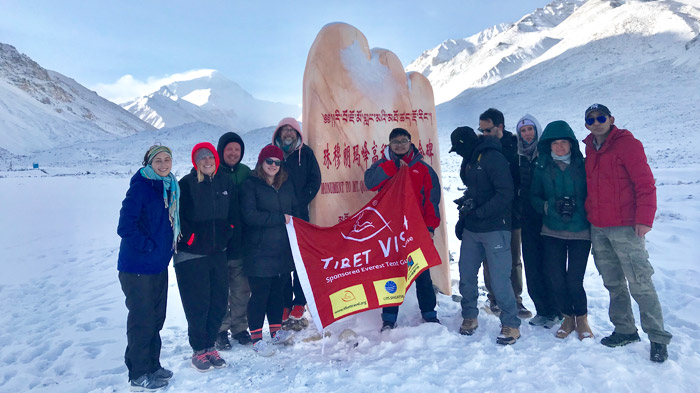 Mt.Everest Base Camp changes to one of a pristine white wonderland in winter.
Mt.Everest Base Camp changes to one of a pristine white wonderland in winter.
The daytime temperatures at EBC in the winter months range between freezing and minus five degrees, which does mean it is cold enough to warrant plenty of warm clothes. At night, the temperature around the base camp can drop as low as minus fifteen degrees, and with wind speeds of more than 14 kilometers per hour, this temperature can seem much colder. Rain is a rarity at EBC, though it can happen in the winter months, with around 5mm per month. The sun’s radiation, however, is not as strong in the winter months around EBC, as there is a little more cloud cover to block it, though sun cream should still be used.
Undoubtedly, the icy snow-clad landscape around Everest in the winter is spectacular, and one that should not be missed if you are traveling to Tibet in the winter months. November to January are the better months to travel in winter, as February can sometimes be extremely harsh, and even the roads to the camp can get blocked in February. Besides, Tibet is normally closed to international tourists at this time of year for the Tibetan New Year celebrations.
>> Best Time to Travel to Everest Base Camp - Apr, May, Sept, Oct, Nov.
Enjoy EBC Tour in Winter for Normal Tourists
If you are planning a tour of Everest Base Camp in winter, then you are going to be in for a delightful surprise. As beautiful as the route and base camp are in summer, in winter it is totally different, and well worth taking the time to make your journey to Tibet in the winter months from November to January.
Same Travel Route, Utterly Different Scenery
The route from Lhasa to EBC is the same for winter as it is for summer, just with a much more spectacular landscape along the way. Once outside Lhasa, the first place to visit is Lake Yamdrok, one of the Great Three Holy Lakes of Tibet. In summer, this lake is surrounded by lush green plains and brown mountains. In winter, the scene changes completely, with many parts of the lake freezing over, leaving it with an icy coating. The landscape around changes as well, with some snow on the normally bare mountain tops and frosty grasslands surrounding the lake.
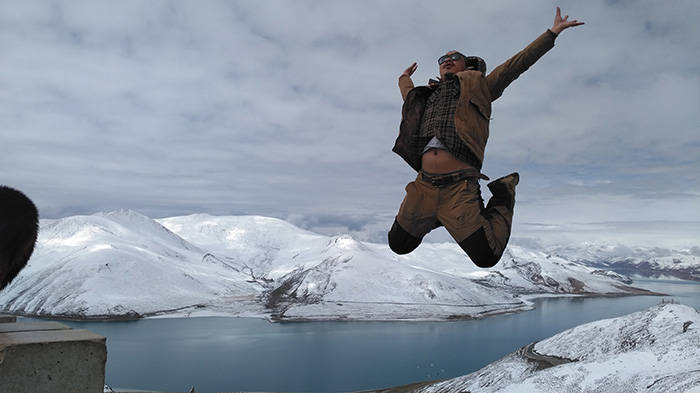 Yamdrok Lake in Tibet winter
Yamdrok Lake in Tibet winter
Gyantse and Shigatse are also a little different in winter, with the colder air prompting the locals to don their heavier and thicker winter clothes. A little colder and frostier than Lhasa, Shigatse can be a little icy in the winter, and the clear blue skies belie the actual cold of the winter, making it look warmer than it is. Out on the road, the Himalayas change in the winter months, like a dog growing its winter coat. Green hills and the visible rock of the mountains has changed to white on white, with the snow hitting the mountains of the Himalayas in full force.
EBC itself changes as well. While the site is mostly gravel and dustiness throughout the rest of the year, when winter brings the snow, the scenery changes to one of a pristine white wonderland. Gone is the dusty roads and rough terrain, and in its place, a stunning white blanket that covers the entire base camp. Few footprints disturb the snow, as few people come here in winter. It is as if man has never set foot in this new ethereal land.
Benefits for EBC Tour from Nov to Early Feb
There are many benefits of touring to EBC in the winter months, not the least being the lack of people crowding out the camp. In the summer, thousands of people flock to this huge tourist attraction to get a glimpse of the world’s highest mountain. In the winter, many people believe it is too cold to travel to Mount Everest, so avoid traveling in Tibet from November to March. However, they could not be more wrong, and a trip in winter is much more exciting and adventurous than in the summer months.
Aside from the benefits of fewer tourists, you have the opportunity to see Tibet and Everest Base Camp in a completely different light. This snowy scenery only happens in Tibet in the depths of winter, and to get the chance to see it, you need to be here in the colder months of the year. And while everyone else is telling of how they visited Everest Base Camp in the bright summer sun, you get to boast about how you built a snowman at EBC.
Everest is not much of a pilgrimage destination, but the winter months are also the best time to encounter the Tibetan pilgrims on their long journeys to pray and prostrate at some of the region’s most sacred sites. One of the sites that is used for pilgrimage is the Rongbuk Monastery, where many of the Tibetans that live in the area come to pray, and where a lot of the pilgrims from the Sherpa peoples come for their annual pilgrimage.
Costs can also be all to lower in winter, with many discounts being given for the flights, train tickets, and even the entrance tickets to many of the attractions around the region. All of these things can make your tour much cheaper, as can the promotional offers that can be had in the winter months. To better promote winter tourism in Tibet, we often have additional benefits and discounts for our winter small group tours, which can save you money and give you a much better trip that you thought possible.
Dining and Accommodation at EBC from Nov to Early Feb
By the end of October, the “tent city” at EBC has been packed up and the owners headed off home to spend the winter somewhere not quite so cold. This also means that the tent guesthouses will not be available again until the spring comes around, usually around mid-April. Instead, you can stay at the Rongbuk Monastery guesthouse, which is rarely ever full in the winter months.
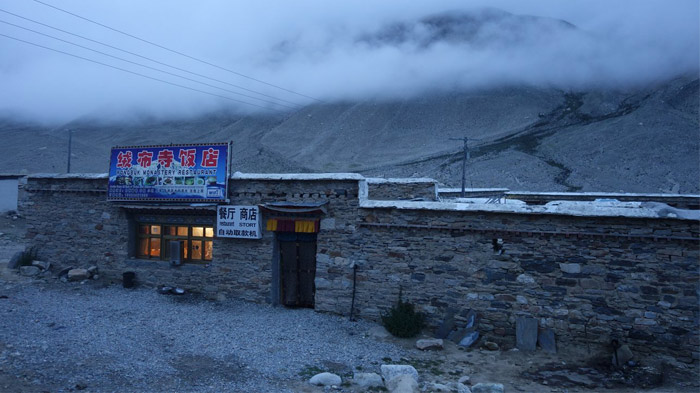 When winter comes, EBC tent hotels would be teared and you can stay overnight at Rongbuk Monastery Guesthouse instead.
When winter comes, EBC tent hotels would be teared and you can stay overnight at Rongbuk Monastery Guesthouse instead.
Dining and accommodation in EBC are basic at the best of times. At the Rongbuk Monastery guesthouse, the facilities are very basic, without running water, outdoor toilets that are not the best in China, and no chance of getting a decent shower. However, while the facilities are basic, the food can be quite good, if you like Tibetan cuisine. The dining room may consist of a rough wooden table and what appear to be ancient chairs, but the food is as good as you can expect this far out from Lhasa in the middle of nowhere. If local cuisine is not appealing to you, then you should bring plenty of food with you from Lhasa or Shigatse, as there is nowhere to buy food this far from the towns and cities.
Do Pack the Right Stuff for EBC Tour in Winter
If you are planning to visit EBC in the winter, then you are going to need to revise your packing list a little. For most of the year in Tibet, you can get away with less warmer clothing, as the temperatures are comfortable to hot, except at night. In the winter, the temperatures are a lot lower, especially at EBC, and you need to have much warmer clothing for a trip there.
Layers are still the best way to stay warm, even in winter, but you should add a good thick jacket for the colder weather around EBC. Down-filled thermal jackets, like those used in Europe and the United States when skiing in the winter, are ideal for staying warm in Tibet in winter. Thick fleece jackets are also good for staying warm. Jeans are not a good idea in the winter, as trudging through snow can get them a little wet, making them heavy and uncomfortable. Instead, go fir trekking pants or thick cotton pants with long thermal underwear to wear underneath, as getting too cold in your extremities can be dangerous.
In the summer, a hat is essential. So it is in the winter too, although a woolen hat or fleece cap is much better in the winter, as it can keep your head warm. Most of the heat loss from the body in cold weather is lost through the scalp. Gloves are also an essential item in winter, to keep your hands from getting cold. Lined Gore-Tex is the best option, though any form of thermal glove will do. Boots should be lined and warm, and thick socks are a great way to keep your feet warm. Make sure the boots are waterproof, or your socks will get wet and leave your feet open to frostbite.
Winter in Tibet does not mean you can forego the sun cream, though. Even in the winter, the increased altitude can mean the sun is strong enough to easily burn your skin, so a good factor 30 sun cream should be used, as should sunglasses, to stop the glare from the snow, and lip balm, to prevent capping of the lips from the wind.
>> What to Pack for Everest Base Camp Trek
Be Caution for EBC Trek from Nov to Early Feb
While it is not recommended for most people, it is possible for professional trekking teams to challenge yourself to trek from Old Tingri to EBC in the winter months, though it is a lot colder and more inhospitable than in the rest of the year. While it can be cold, there is not usually much snow to impede your progress, though some of the parts of the trail can be a little icy and treacherous.
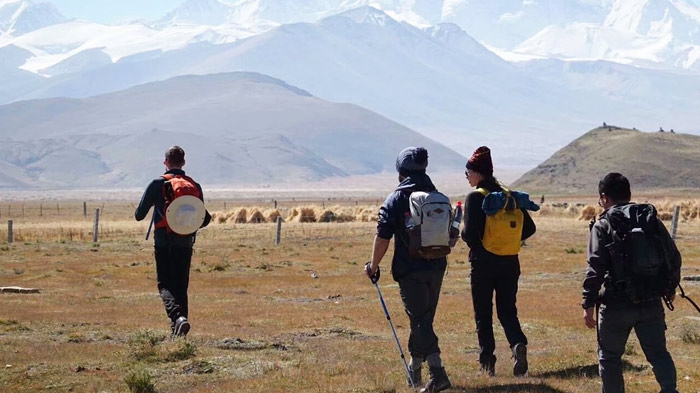 Our clients have successfully trekked from Old Tingri to EBC in early November.
Our clients have successfully trekked from Old Tingri to EBC in early November.
With full preparation, professional team's support, then there should be little problem in taking the trek to EBC, as this four-day 70-kilometer trek is not one of the hardest in the region. Good strong hiking boots, preferably with studs for winter trekking, are the best bet, and it is advisable to use trekking poles when walking, as the ground can be icy and more dangerous. You should also bring arctic-rated sleeping bags, as you will be staying overnight in tents and the temperature can get very cold at night.
>> Ultimate Packing List for EBC Trek in Tibet
The Biggest Challenge Facing EBC Trek in Winter
The trek to EBC from Old Tingri may not be the most demanding trek in Tibet, but the winter does make it more physically demanding than in the summer months. Treacherous icy ground can easily make you lose your footing, and the temperatures can leave your extremities cold and numb, making it harder to keep going. Nights are well below freezing, and care should be taken to remain warm during the night with good arctic sleeping bags and windproof tents.
The trek is 70 kilometers over some of the most inhospitable landscapes in Tibet during the winter, and the area is mostly uninhabited with the exception of a few small local settlements. You should also be aware that, despite the area not usually getting that much snow, heavy snowfall can occur at any time, and you could wake up to find your tent is half-buried in snow.
Who Can Do EBC Trek in Winter
Ideally, a trek in winter from Old Tingri to EBC should only be done by experienced trekkers , and trekkers with experience of trekking at high altitudes in winter. Trekking teams or groups need to be fully prepared for the trek, with the correct equipment to cater to trekking in extremely cold environments. Groups should stay together when trekking, and not wander off to look at the view, as you may get separated from the group, and possibly lost. You should also remember to listen to your trekking guide, as they are very experienced at trekking in the winter at the extreme altitudes that can be found in Tibet.
If you have the experience and professionalism to trek to EBC in the winter, then it can be arranged. If not, then it is best to take the car to EBC along the road, to make sure that you are kept safe in this high-altitude region.
A tour of Tibet to EBC in winter is one of the most spectacular trips you could take, and with the many benefits and bonuses of a winter tour, it would be a mistake to pass up the opportunity of taking one. Winter is Tibet is a special time of year, and one that will leave a lasting impression.
More Mount Everest Base Camp Travel Guide
 Mt.Everest Fact
Mt.Everest Fact- Everest Base Camp Nepal vs Everest Base Camp Tibet
- Mount Everest History and Its Famous Explorers
- The Difference of Mt.Everest in Nepal and Tibet
- Kathmandu to EBC Distance: how far and how to get to EBC in Nepal and Tibet from Kathmandu
- How Many Base Camps on Everest in Both Sides of Tibet and Nepal
 Everest Base Camp Tour Guide
Everest Base Camp Tour Guide- When is the Best Time to Visit Tibet Everest Base Camp in 2024
- When is the Best Time to Enjoy EBC Trek in Nepal
- The Best Hotel at Everest Base Camp in Tibetan Side
- Guide to Tibet Everest Base Camp Tour in Winter
- How to Get to Everest Base Camp (EBC) from Nepal?
- How to Get to Mount Everest Base Camp from Lhasa
- What Documents Do I Need for Everest Base Camp Tour in Tibet and Nepal?
 Everest Trekking Guide
Everest Trekking Guide- What to Pack for Everest Base Camp Trek
- Tingri to Everest Base Camp Trekking
- Everest Trek: Trekking Routes along The Gama Valley
- Everest Base Camp Trekking Maps in Tibet
- Ultimate Packing List for Everest Base Camp Trek in Tibet
- Best Trek in Nepal: Everest Base Camp Trek vs. Annapurna Circuit Trek
- Top 2 EBC Trekking Routes in Tibet
- EBC Trek in Tibet vs. EBC Trek in Nepal

Recommended Everest Base Camp Tour Packages
-
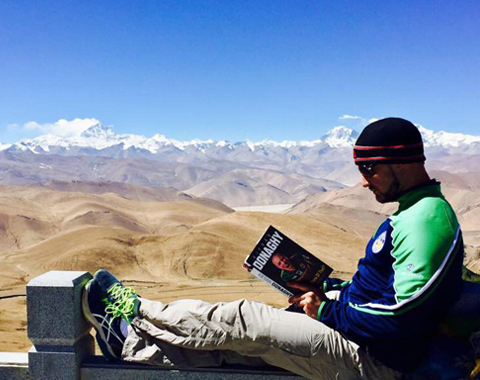 7 Days Lhasa to Kathmandu Overland Small Group Tour: Traverse from the North Side to the South Side of Mt.Everest for the Best of the Himalayas
7 Days Lhasa to Kathmandu Overland Small Group Tour: Traverse from the North Side to the South Side of Mt.Everest for the Best of the HimalayasTour Route: Lhasa - Gyantse - Shigatse - Everest Base Camp - Gyirong - Kathmandu
From USD979 p.p
-
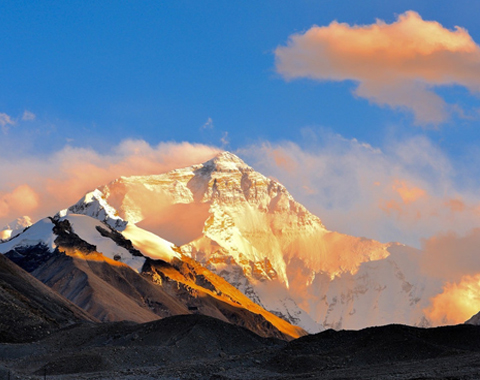 8 Days Lhasa to Everest Base Camp Small Group Tour: Marvel at Mt.Everest Real Close from 4 Different Viewing Platforms
8 Days Lhasa to Everest Base Camp Small Group Tour: Marvel at Mt.Everest Real Close from 4 Different Viewing PlatformsTour Route:Lhasa - Gyantse - Shigatse - Everest Base Camp - Shigatse - Lhasa
From USD939 p.p
-
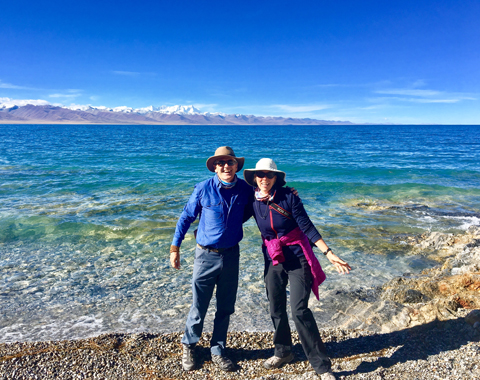 10 Days Lhasa to Everest Base Camp and Namtso Lake Small Group Tour
10 Days Lhasa to Everest Base Camp and Namtso Lake Small Group TourTour Route:Lhasa - Gyantse - Shigatse - EBC - Shigatse - Lhasa - Namtso Lake - Damxung - Lhasa
From USD1289 p.p
-
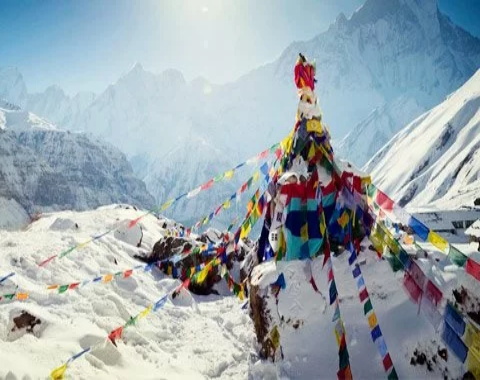 17 Days Nepal Everest Base Camp Trek Tour
17 Days Nepal Everest Base Camp Trek TourTour Route:Kathmandu - Phakding-Namche Bazaar-Tengboche- Dingboche- Lobuche-Gorakshep- Everest base camp-Kathmandu
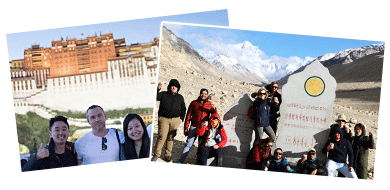

.jpg)


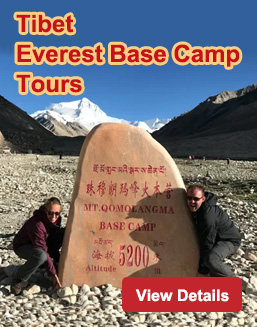

0 Comment ON "Can I Tour or Trek to Everest Base Camp in Winter Nov. Dec. Jan and Feb? "